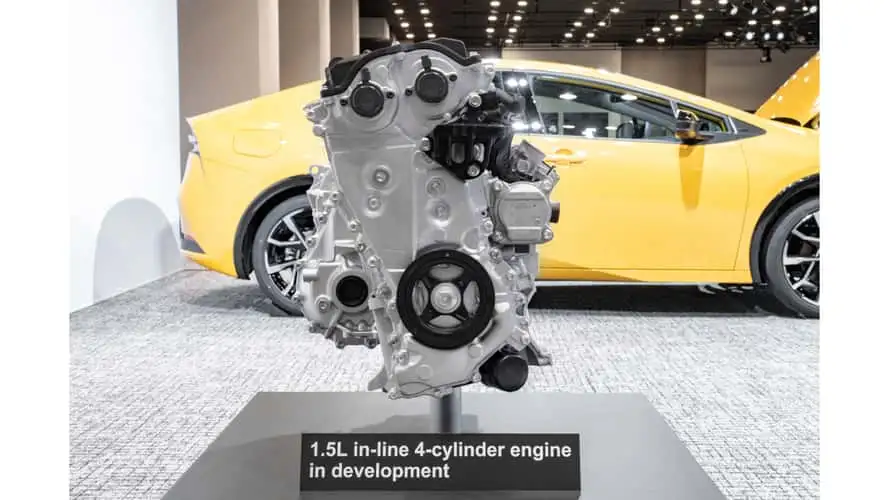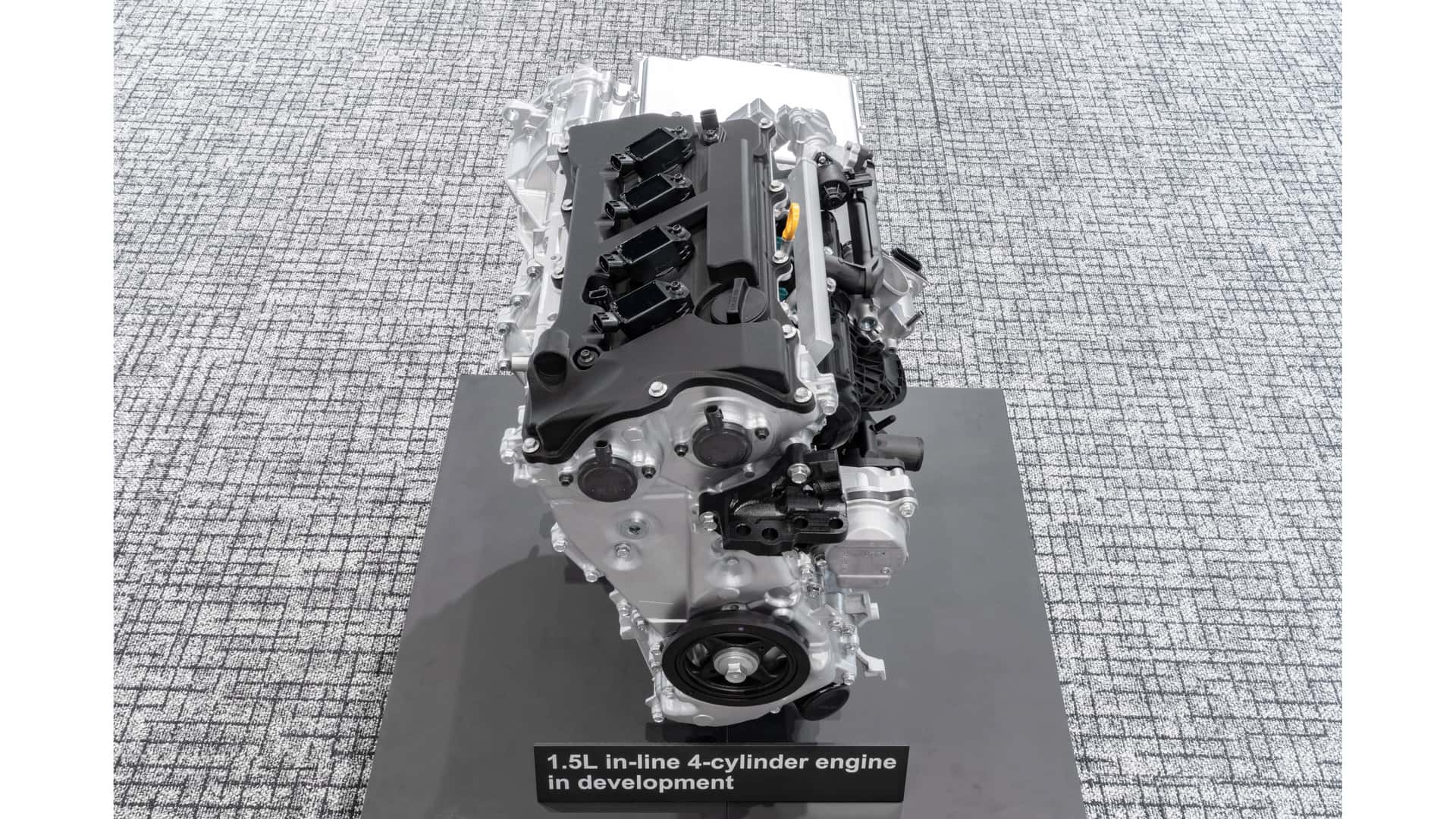
Posted on 08/13/2025 7:11:07 AM PDT by Red Badger

Toyota is adamant that the internal combustion engine still has a bright future despite the rise of electric vehicles. The world’s largest carmaker has reaffirmed its long-term commitment to ICE by partnering with fellow Japanese brands Subaru and Mazda on a new family of gas engines. Smaller and lighter four-cylinder units are touted as a “game-changer solution” by the company’s Chief Technology Officer, Hiroki Nakajima.
We now know the Japanese automotive giant plans to use the upcoming 1.5- and 2.0-liter engines in nearly every conceivable type of powertrain. Toyota Europe Vice President of Product Strategy and Marketing Andrea Carlucci told Automotive News the new hardware’s versatility is key: “We are trying to optimize the new engine for any type of application, whether it’s electric, hybrid, or hydrogen.”
While the idea of a gas engine in an electric application might sound odd, a plausible scenario exists. Toyota is likely referring to extended-range electric vehicles (EREVs), where the combustion engine doesn’t drive the wheels but instead serves solely as a generator to recharge the battery on the go. This setup allows the engine to run at optimal speeds for maximum efficiency. Examples include the BMW i3 REX, the Ramcharger, Mazda MX-30, Scout’s upcoming truck and SUV, and Nissan’s models equipped with E-Power tech.
Toyota has already announced plans to sell extended-range electric vehicles in China through its local joint venture with GAC, giving the Highlander SUV and Sienna minivan the EREV treatment. These models are expected to use a small engine that isn’t mechanically connected to the wheels. Instead, propulsion will come exclusively from electric motors, with the engine serving only to extend range without abandoning gasoline entirely.
Toyota achieved 41 percent thermal efficiency back in 2018 and could be aiming to improve that figure further. Its next-generation engines will run not only on fossil fuels, but also on biofuel, hydrogen, and synthetic fuel. Beyond full hybrids and EREVs, Toyota is also exploring long-range plug-in hybrids, with Carlucci estimating that 62 miles (100 kilometers) without sipping any gasoline represents the “tipping point.”
Confirmed engines include naturally aspirated and turbocharged 1.5-liter units, along with a larger 2.0-liter turbo. Efficiency won’t be the only focus as the latter will also have a performance version for Gazoo Racing (GR) models, delivering up to 600 horsepower in race cars.
New Toyota four-cylinder engines


Carlucci also discussed vehicle architectures:
“Everybody has taken an ICE platform and turned it into something that is electrified to some degree. So, why not conceive a platform that is EV-native and see how much we can adapt it to be used for a plug-in hybrid or a full-hybrid without sacrificing any of the new platform’s strengths?”
Of course, dedicated electric platforms are nothing new. Tesla is the obvious example, but there’s also Volkswagen Group’s MEB, Hyundai and Kia’s E-GMP, and Mercedes’ EVA, among others. Additionally, some EV-native platforms can also accommodate combustion engines, such as Stellantis’ STLA Small, Medium, Large, and Frame. Scout’s upcoming models fit this category, as will VW Group vehicles on the forthcoming Scalable Systems Platform (SSP).
Much like Toyota chairman Akio Toyoda, who has famously said EVs will never exceed a 30 percent market share, Carlucci maintains that electric cars are not the sole path to decarbonization. He argues for powertrain diversity, giving customers the freedom to choose: “We will not push EVs in markets where there is no demand.”
You said “Ford” and “auto tranny” in the same sentence.
Tsk tsk tsk...
SMH
“Toyota should bring back the 5.7 V8. “
Several versions. We have the 4.6.
All I can say is: AMAZING VEHICLE!!!
Averaged 38mpg to & from Tennessee from Northeast IL, including over two mountain ranges (Cumberland and Smokey Mountains).
Even in ECO mode, it had monster acceleration using the electric motors to boost acceleration with the gas engine.
In Sport mode I thought I was driving a V8 the acceleration was that damn' impressive and the MPG hit in Sport mode was pretty nominal.
Toyota's had it 100% right since the beginning and I believed it when they said it years ago: HEV's are the future, EV's are not.
You don't get stranded with an HEV unless you run out of gas.
Well, at least it wasn’t Wazoo!..............
Hybrids use ICE for propulsion with a small battery to add economy and performance.
EREVs use a larger battery for propulsion with an ICE to extend range.
Get's about 70mpg, 0-60 in just over 4s.


So far the new Subaru hybrids have boxer flat engines, but running the miller cycle as Toyota does.
I don't know where you live, but according to new numbers from global research firm Rho Motion, 9.1 million EVs were sold worldwide in the first half of 2025, up 28% compared to the same period last year.
And, if Tesla starts putting their new aluminum ion battery in 2026 models, the game is over for gasoline. According to Musk, they will be able to sell a car in the 15k price range that is lighter, goes over 5 times farther on a charge, can fully recharge in 10 minutes, with a battery that has a service life of 40 years, uses no lithium, and the fire hazard will be non-existent.
That alone would make it a hit. I don't believe thee are any current cars priced under 20k.
People haven't learned a few important lessons about Elon Musk:
Don't tell him that you can't build a rocket that can take off, and then come back and land itself right at your feet.
Don't tell him that you can't do a better job than NASA when it comes to putting things in orbit.
Don't tell him that you can't build a self-drive electric car.
Don't tell him that you can't build and sell an electric car for under 20k that can drive itself, has a battery that can exceed 40 years life expectancy, fully recharge in 10 minutes, and outperform most performance gasoline cars on the road today.
Works if you ignore the salesman promo 10,000 mile oil change and stick with mechanics recommended 5000 max between changes.
A year or so after the gasoline-powered onboard battery-charged cars (not a hybrid - no mech linkage from engine to wheels; not a loco - serious battery component) are released, I foresee a sneaky little change where they introduce a streamlined version of the cars where they have quietly eliminated the E part and reduced the weight and price. They will have to come up with a snazzy name for this.
What I want is a multifuel car or truck with open source computing, software, data for all milled molds and parts; maximum use of generic hardware and software; generic open specs for everything; bonded guarantee of parts and software back-compatibility for 25 years; price quoted in gold ounces.
Soon, automobiles and trucks will be 3-D Printed right in your driveway..................
Yep. Our daily drivers are a Toyota Sequoia and an Acura RDX.
Toyo is at about 90K and the RDX is at about 70K.
The plan is to keep both until we are not able to drive anymore. Paid off at time of purchase.
Include data (not just specifications but detailed instructions like a patent would have) for stamped parts. Simply all information for all parts, like a patent would have. Maybe it could all be patented, but licensing would have to be easily affordable.
Interesting, where were the majority of those TVs sold, did they say?
Internal combustion engines really work at peak efficiency at one RPM and one load. Of course, this makes them pretty good for charging batteries.
Disclaimer: Opinions posted on Free Republic are those of the individual posters and do not necessarily represent the opinion of Free Republic or its management. All materials posted herein are protected by copyright law and the exemption for fair use of copyrighted works.